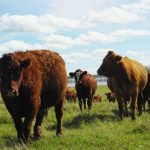MOOSE JAW, Sask. – Cattle producers in Manitoba and Saskatchewan have asked for government help after a season of flooded pastures and poor quality feed.
The Manitoba government has already asked federal agriculture minister Gerry Ritz for assistance under AgriRecovery.
A Manitoba government spokesperson said the province’s money is in place and negotiations are ongoing.
The Manitoba Cattle Producers Association estimated that excess moisture has affected at least one-third of the province’s 10,000 producers.
It said this summer that producers needed urgent assistance, including per head payments for feeder and breeder stock to offset lost pasture and hay land, freight assistance to haul feed and a tax deferral option for those who have to downsize their herds.
Read Also

British Columbia farmers to receive increased AgriStability supports
B.C. farmers to receive bump in AgriStability compensations due to weather concerns, international trade instability
The association also said longer-term programs are required, such as cattle price insurance.
Last week, the Saskatchewan Cattlemen’s Association called for $150 per breeding animal to help deal with the feed shortfall and $40 per acre of grass to help repair it.
The request went to Ritz and provincial agriculture minister Bob Bjornerud, who said Oct. 20 he was caught off guard.
“I just had a meeting with them last week and they never mentioned a word of this.”
Some areas are short of feed, he added, but other areas probably have enough or surplus.
He said recent warm, dry weather allowed harvest to proceed and straw to be baled. A better assessment of the situation could be made by mid-November.
However, cattle producers say they need immediate help.
SCA president Jack Hextall said the cattle industry was told it was too early to worry about flooded forage when the AgriRecovery payment was announced last May for producers who suffered from two years of drought.
“I think we gave it ample time and time’s run out now,” he said in an interview during an SCA district meeting in Moose Jaw.
Bill Jameson, the District 2 SCA director, said producers are telling him there is no stubble or pastures to graze and the hay crop is variable.
Ken Demyen of Qu’Appelle, Sask., who challenged Jameson for district representation on the SCA board, said producers need freight assistance to haul feed to their cattle or haul their cattle to where there is feed.
“$150 will not help if you have no feed,” he said.
The SCA wants the payments made on an individual rather than a regional basis so producers aren’t excluded because they live on the wrong side of a municipal boundary.
“There’s always some producers that get left out in the cold,” Jameson said.
Bjornerud said that sounds simple, but it is too open-ended.
“There will be no ad hoc payment as far as transportation assistance, anything like that,” he said. “We’re watching to see just how it shakes down.”
He said a $40 per acre payment for grass falls more in line with how Agri-Recovery worked for the drought payment, but he couldn’t offer assurances that would arrive either.
“We’ve been making the federal minister very aware of what’s going on here. I think the federal government too is watching.”
Ritz agreed in an e-mailed statement.
“At this stage it is too early to gauge the impacts of excess moisture on the availability of forage and feed, but together with our colleagues in Saskatchewan we are keeping a close eye on the situation,” he said.
“In the meantime, the current suite of programs is available as the first to assist farmers with the impacts of excess moisture, including dealing with increased feed and transportation costs.”
Industry and provincial governments have said there have to be clear, defined triggers for AgriRecovery so that it functions properly as a federal-provincial program producers can count on.
















